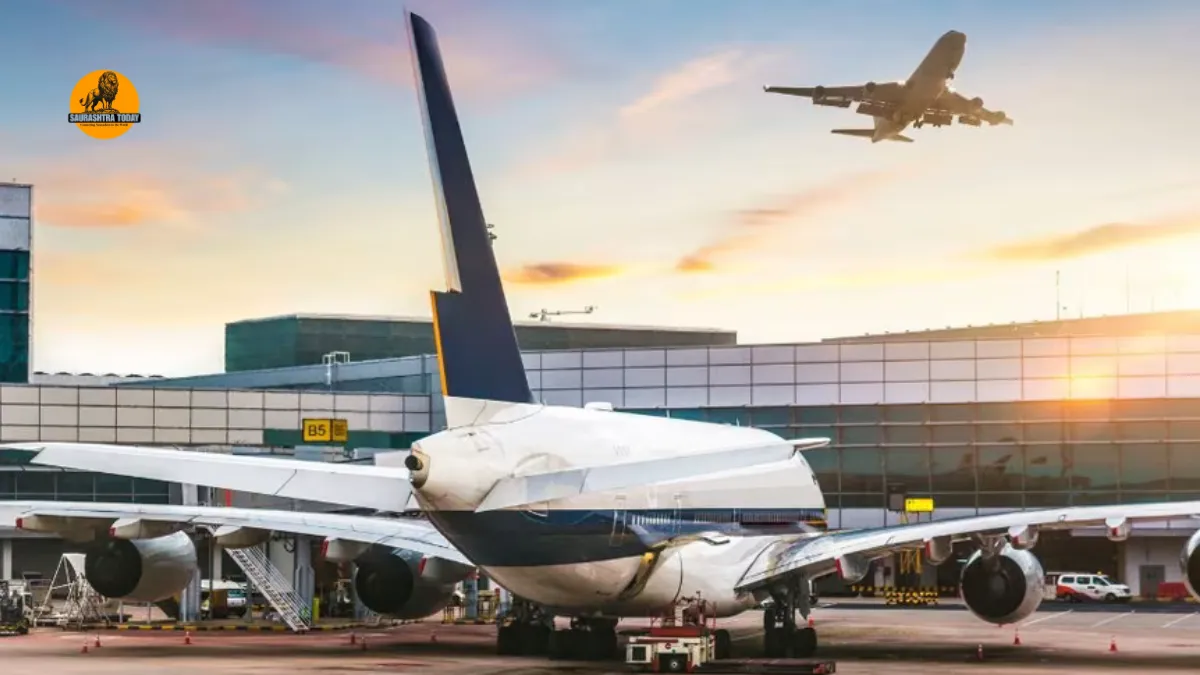Dholera International Airport is one of India’s most ambitious aviation projects, designed to strengthen connectivity in Gujarat and support the rapidly growing Dholera Special Investment Region (DSIR). Located near Ahmedabad, this state-of-the-art airport is expected to play a pivotal role in boosting trade, tourism, and industrial growth, making Gujarat a global hub for investment and infrastructure.
In this article, we will explore the vision behind Dholera International Airport, its current progress, features, economic significance, and future potential.
The Vision Behind Dholera International Airport
The airport is a strategic project initiated under the Delhi-Mumbai Industrial Corridor (DMIC) and integrated with the Dholera Smart City initiative. The main vision is to decongest Ahmedabad Airport (Sardar Vallabhbhai Patel International Airport) and create a world-class aviation hub capable of handling both domestic and international traffic.
Planned over 1,426 hectares of land, Dholera International Airport is designed to become one of the largest airports in India. It will serve as a multi-modal logistics hub by supporting passenger services, cargo operations, and industrial freight movement.
Key Details of Dholera International Airport
Here’s a quick overview of important facts about the project:
| Feature | Details |
|---|---|
| Project Name | Dholera International Airport (Dholera Greenfield Airport) |
| Location | Near Navagam village, 80 km from Ahmedabad, Gujarat |
| Land Area | 1,426 hectares |
| Initial Runways | 2 (expandable in phases) |
| Capacity (Phase 1) | 12 million passengers annually |
| Cargo Capacity | 300,000 tonnes annually |
| Developer | Dholera International Airport Company Ltd. (DIACL) |
| Estimated Cost | ₹2,000 – ₹3,000 crore (initial phases) |
| Target Completion (Phase 1) | By 2026 |
| Connectivity | Linked with Dholera Smart City, DMIC, Expressways, and High-Speed Rail Corridor |
Infrastructure and Features
Dholera International Airport has been designed with futuristic planning to meet global standards. Some of its proposed features include:
- Dual Runways: Capable of handling large aircraft, including Airbus A380.
- Passenger Terminals: Spacious, modern terminals with advanced check-in and baggage handling systems.
- Cargo Facilities: Dedicated cargo hubs to facilitate international trade.
- Eco-Friendly Design: Built with sustainable energy use and green infrastructure.
- Multimodal Connectivity: Linked with express highways, metro rail, and the proposed Ahmedabad-Dholera Semi High-Speed Rail Corridor.
This forward-looking infrastructure ensures that the airport will not only cater to present-day needs but also adapt to future aviation growth.
Economic Significance of Dholera International Airport
The airport will be more than just an aviation facility – it will be a growth engine for Gujarat’s economy.
- Boosting Industrial Development:
As part of the Dholera Special Investment Region (DSIR), the airport will facilitate seamless logistics for manufacturing units, technology parks, and export-driven industries. - Promoting Tourism:
Gujarat, with attractions like Gir National Park, Somnath Temple, Dwarka, and the Rann of Kutch, will benefit from increased international tourist arrivals. - Job Creation:
The construction and operation of Dholera International Airport are expected to generate thousands of direct and indirect employment opportunities. - Cargo and Trade Hub:
The airport will support cargo movements, making Gujarat a preferred destination for international exporters and importers. - Decongesting Ahmedabad:
By diverting air traffic from the busy Ahmedabad airport, it will improve air traffic management and enhance passenger convenience.
Current Progress and Timeline
As of now, land acquisition and groundwork for Dholera International Airport are in advanced stages. The Airport Authority of India (AAI) and the Gujarat government are closely monitoring the project.
- Phase 1: Scheduled for completion by 2026, capable of handling 12 million passengers annually.
- Future Expansion: By 2030 and beyond, the airport may handle 50 million passengers annually, making it one of India’s busiest aviation hubs.
With financial approvals already in place, construction activities are moving at a steady pace, aligning with the overall growth of Dholera Smart City.
Connectivity Advantage
One of the strongest points of Dholera International Airport is its strategic connectivity. It will be seamlessly linked with:
- Ahmedabad-Dholera Expressway (under construction).
- High-Speed Rail Corridor connecting Ahmedabad and Mumbai.
- Dholera Metro Rail Project connecting the airport with Dholera Smart City.
- DMIC Freight Corridor for cargo and industrial logistics.
This ensures smooth access for both passengers and cargo, integrating the airport into a larger multi-modal transport ecosystem.
Future Potential
Experts predict that Dholera International Airport could transform Gujarat into a global aviation and business hub. With India’s booming civil aviation sector and Gujarat’s growing industrial base, the airport is positioned to become:
- A major cargo hub for exports and imports.
- A gateway for international airlines seeking new hubs in India.
- A key driver for real estate and infrastructure growth in Dholera and surrounding regions.
Once operational, it may also attract Maintenance, Repair, and Overhaul (MRO) facilities, aviation training institutes, and aerospace companies, further fueling growth.
Also read: Dholera Smart City: India’s First Greenfield Futuristic Smart City
Conclusion
Dholera International Airport is not just an aviation project – it is a symbol of India’s infrastructural transformation and Gujarat’s rising prominence in global trade. With advanced planning, world-class facilities, and strong connectivity, the airport is set to redefine air travel and logistics in western India.
As the first flights take off in the coming years, Dholera will move closer to its vision of becoming a smart, sustainable, and globally connected city, and the airport will be at the heart of this transformation.


















